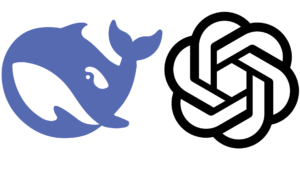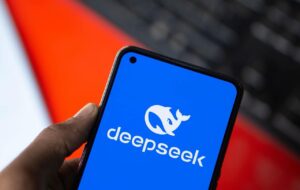OpenAI Responds to DeepSeek AI with Early Launch of o3-Mini—A Comparison

OpenAI’s Launch of the o3-mini Model: A Strategic Response to Competition
On Friday, OpenAI introduced its latest product, the o3-mini model. This move comes in the wake of a surprising development from DeepSeek, a Chinese startup. DeepSeek launched the R1 model, which demonstrated remarkable performance while significantly reducing computational costs, shaking up the AI sector. OpenAI’s announcement aimed to solidify its standing in the market amidst this heightened competition.
What is OpenAI o3-mini?
OpenAI describes the o3-mini as the newest and most economical model in its series focused on reasoning tasks. This model is now accessible through ChatGPT and the OpenAI API. It was first highlighted in December 2024 and is noted for its speed and efficiency. The o3-mini is specifically designed to improve the reasoning capabilities of AI applications, helping to address complex problems and enhancing coding abilities.
Key Features of the o3-mini
OpenAI has made several enhancements with the o3-mini, including:
- Free Reasoning Capabilities: For the first time, OpenAI has made advanced reasoning features available at no cost to users.
- Increased Daily Limits: For subscribers, daily message limits have tripled from 50 to 150, promoting more engagement with the new reasoning models.
- Model Variations: The o3-mini comes in three variants—low, medium, and high—that allow for tailored responses depending on user needs.
Differences Between OpenAI’s Models
OpenAI offers two core families of AI models: Generative Pre-trained Transformers (GPT) and the "Omni" (o) series.
- GPT Models: These models are versatile and creative, excelling in tasks like storytelling, chat, and brainstorming.
- Omni Models: Conversely, the o series is more analytical. It is designed for tasks requiring critical thinking, such as programming and complex problem-solving.
Performance Comparison: o3-mini vs. R1
The o3-mini aims to reclaim its competitive edge by being 24% faster than its predecessor and capable of outperforming older models on vital benchmarks, all while being cost-effective. However, in some specific tasks, it shows weaknesses compared to DeepSeek’s R1 model.
- Reliability in Knowledge: While o3-mini lags behind in general knowledge and multilingual capabilities, it excels in tasks like coding and factuality.
Pricing Overview
When looking at pricing, the cost of using the o3-mini is more competitive than its predecessor. The pricing structure stands at $0.55 per million input tokens and $4.40 per million output tokens, making improvements over previous models. However, it still trails significantly behind DeepSeek’s rates, which are $0.14 and $2.19, respectively, for similar amounts.
Industry Impact
DeepSeek’s introduction of the R1 model has caused considerable market shifts; it outperformed OpenAI’s models while using much less computational power. This has led to significant stock market reactions, with major companies like Nvidia experiencing sharp declines in their valuations, raising concerns about demand for high-cost AI chips.
The competitive landscape intensified when Alibaba launched its Qwen2.5 Max model, further propelling Chinese advancements in AI technology. OpenAI is responding to this pressure by continually iterating and enhancing its models.
Benchmark Performance
OpenAI’s o3-mini medium version has achieved a score of 79.6 in the AIME benchmark for math problems, closely trailing DeepSeek’s R1 at 79.8. Other performance measures reveal that while DeepSeek R1 leads, the o3-mini high model exceeds expectations in various tasks and benchmarks.
Testing Real-World Functionality
In specific practical tests, the o3-mini exhibited weaknesses, especially in multi-step reasoning tasks, where it reached incorrect conclusions. For example, in a spying scenario using a common dataset, o3-mini incorrectly identified the culprit, while DeepSeek’s R1 performed accurately.
However, the o3-mini showcased strengths in logical language tasks and math challenges, outperforming its competitors in specific scenarios, such as completing complex problems swiftly and accurately.
Overall, OpenAI’s push to innovate demonstrates its efforts to maintain relevance and competitiveness in a rapidly changing AI landscape. The introduction of the o3-mini model reflects both a strategic response to market challenges and an ongoing commitment to advancing AI technologies.






